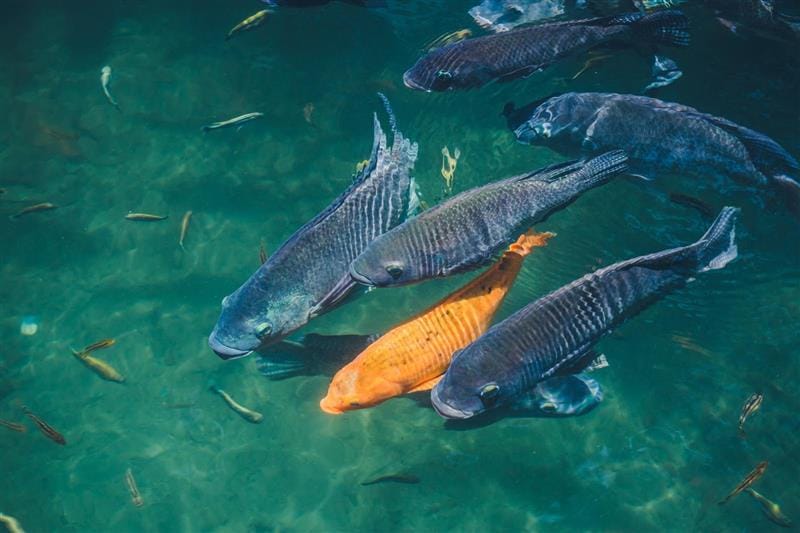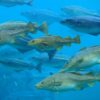Fish migration is a fundamental aspect of aquatic ecosystems, playing a crucial role in maintaining biodiversity, sustaining fisheries, and supporting the food chain. However, with growing environmental challenges such as climate change, habitat destruction, and overfishing, monitoring fish movements has become essential for conservation. One of the most effective methods used by scientists and fisheries managers to track fish migration and habitat use is the Fish Tagging System.
Fish Tagging involves attaching small tracking devices to fish, enabling researchers to gather real-time data on their movements, breeding sites, and environmental interactions. Different tagging methods—such as acoustic, satellite, radio, and Passive Integrated Transponder (PIT) tags—allow scientists to monitor species across vast distances, whether in freshwater rivers, coastal areas, or deep-sea environments. This information helps in identifying migration routes, protecting critical habitats, and improving sustainable fishing practices.
How Fish Tagging Helps Track Migratory Patterns
Identifying Seasonal Movements
Many fish species undertake seasonal migrations in search of food, suitable breeding grounds, or optimal water conditions. The Fish Tagging System provides detailed insights into these movement patterns, helping scientists predict migration cycles and adjust conservation strategies accordingly.
- Salmon migrate from freshwater rivers to the ocean and return to spawn.
- Tuna and sharks traverse entire ocean basins based on water temperature and prey availability.
- Eels undertake one of the longest migrations, moving between freshwater and the deep ocean to reproduce.
By mapping these seasonal shifts, researchers can better understand the environmental triggers that influence fish movement and ensure their migration routes remain undisturbed.
Pinpointing Critical Habitats
A Fish Tagging System helps identify essential habitats that fish rely on for survival, including breeding, feeding, and nursery areas. These habitats play a vital role in species sustainability, and their destruction can lead to severe population declines.
- Coral reefs provide breeding and shelter spaces for a variety of marine species.
- Estuaries serve as nurseries for juvenile fish before they transition to open waters.
- Deep-sea environments act as safe zones for migratory species avoiding predators.
By recognizing these critical habitats, conservationists can implement protective measures such as habitat restoration projects and marine protected areas (MPAs).
Assessing Environmental Changes on Migration
Climate change and human activities significantly impact fish migration. A Fish Tagging System helps researchers analyze how rising temperatures, pollution, and habitat destruction influence fish behavior and movement patterns.
- Warmer ocean temperatures may force fish to migrate toward cooler waters.
- Deforestation and dam construction disrupt freshwater migration routes.
- Overfishing reduces food sources, affecting the migratory patterns of predators.
Through data collected from tagged fish, scientists can recommend adaptive management strategies to help species cope with these environmental changes.
The Role of Fish Tagging in Habitat Conservation
Supporting Marine Protected Areas (MPAs)
MPAs are designated zones where fishing and other human activities are restricted to protect marine life. A Fish Tagging System helps evaluate the effectiveness of these areas by tracking the movement of tagged fish within protected boundaries.
- If tagged fish consistently remain in MPAs, it confirms the area’s importance for conservation.
- If fish frequently leave protected zones, conservationists may need to adjust boundaries or increase enforcement efforts.
- Data from tagging can help refine MPA policies to maximize biodiversity protection.
By ensuring MPAs align with natural fish behaviors, tagging technology enhances their effectiveness in preserving marine ecosystems.
Reducing Bycatch and Overfishing
Bycatch—the unintentional capture of non-target species—is a major issue in commercial fisheries. A Fish Tagging System provides crucial data on fish distribution, allowing fisheries to refine their practices and reduce accidental catches.
- If specific fish species migrate through a fishing zone during certain months, temporary fishing bans can be implemented.
- Real-time tracking allows fishers to target species selectively, minimizing bycatch.
- Tagging data can guide fisheries in adjusting net designs and fishing methods to prevent overharvesting.
By integrating tagging technology, fisheries can operate more sustainably while ensuring healthy fish populations.
Protecting Spawning and Breeding Grounds
Many fish species return to specific locations for reproduction, making these areas critical for population growth. A Fish Tagging System helps conservationists track these breeding sites and implement protective measures.
- Seasonal fishing restrictions can be enforced in areas identified as key spawning grounds.
- Habitat restoration projects can focus on locations crucial for fish reproduction.
- Governments can set fishing quotas based on data-driven assessments of fish stock health.
By preserving breeding grounds, fish populations can replenish naturally, ensuring long-term ecological balance.
Advancements in Fish Tagging Technology
Real-Time Data Collection and Remote Monitoring
Modern Fish Tagging Systems now include satellite and acoustic tracking, enabling real-time monitoring of fish movements. This eliminates the need for manual data retrieval and improves research accuracy.
AI and Big Data Integration
Artificial intelligence (AI) and big data analytics allow scientists to process vast amounts of tracking information, revealing complex migration trends and habitat preferences. This enhances conservation planning and decision-making.
Miniaturization of Tags for Wider Use
Advancements in microchip technology have made tracking tags smaller and more efficient. This enables scientists to study even the smallest fish species without affecting their natural behavior.
Blockchain for Transparency in Fisheries
The integration of blockchain with a Fish Tagging System ensures transparency in the seafood supply chain. By verifying the source of tagged fish, this technology helps prevent illegal fishing and supports sustainable seafood certification programs.
Future Implications of Fish Tagging for Marine Conservation
The continued development of Fish Tagging Systems will have a profound impact on fisheries management, conservation policies, and ecological research. Future advancements may include:
- Expanding tagging programs to track more species and ecosystems.
- Using AI-powered models to predict migration shifts due to climate change.
- Enhancing global collaboration in marine research through shared tagging databases.
By embracing new technologies, scientists and policymakers can improve fishery sustainability, protect endangered species, and maintain the health of aquatic ecosystems.
Final Thoughts
The Fish Tagging System is a crucial tool in modern marine science, offering unparalleled insights into fish migration, habitat use, and environmental interactions. By providing accurate data, this technology aids in protecting key habitats, enforcing sustainable fishing regulations, and adapting to ecological changes.
As research continues to evolve, fish tagging will remain at the forefront of conservation efforts, ensuring that marine and freshwater ecosystems thrive for generations to come.










Add comment